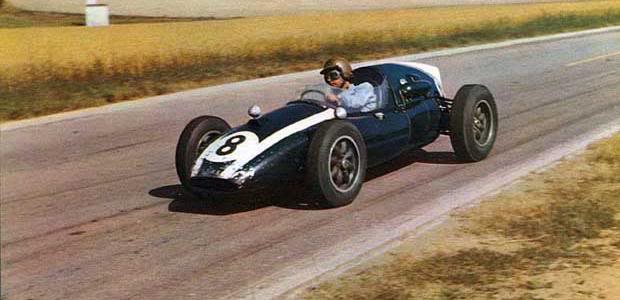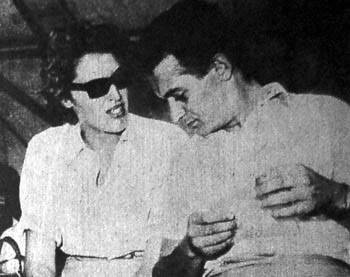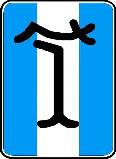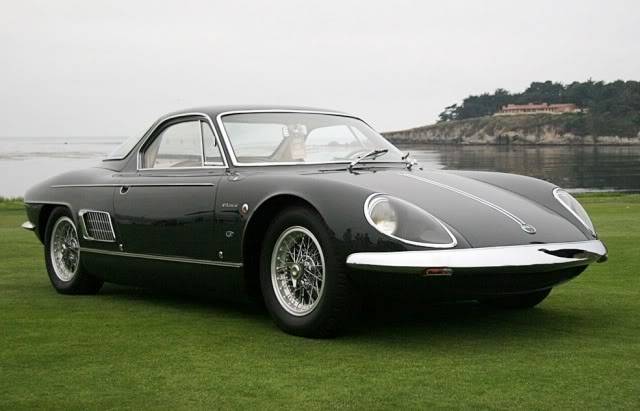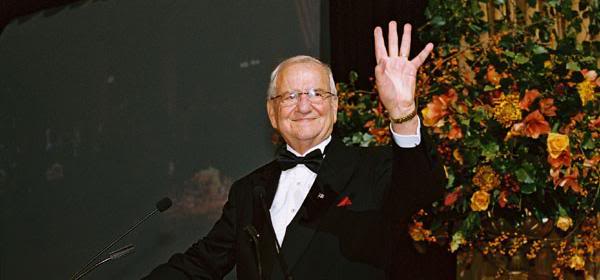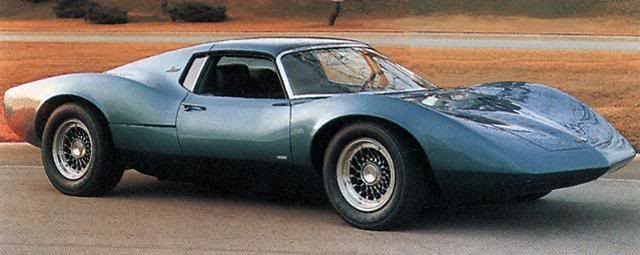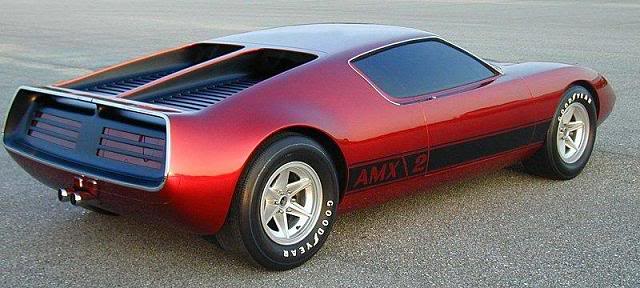|
... the history of the Pantera begins with events that transpired in 1959 ...
1959 was the year Jack Brabham won the prestigious Formula One series championship driving a mid-engine Cooper T-51 race car. This is the first auto racing championship won by the driver of a mid-engine race car. Brabham's series victory marked the beginning of the domination of mid-engine race cars on the world's racing circuits. By 1961 all the regular competitors in Formula One were driving mid-engine race cars. Other milestone victories for mid-engine race cars included the 1963 24 Hours of Le Mans won by Ludovico Scarfiotti and Lorenzo Bandini driving a mid-engine Ferrari 250P; and the 1965 Indianapolis 500 won by Jim Clark driving a mid-engine Lotus 38.
In 1959 mid-engine race cars were constructed by innovative British companies like Lola, Lotus and Cooper. The established Italian race car constructors like Ferrari, Maserati and OSCA were conservative and reluctant at first to experiment with mid-engine race cars. Alejandro and Isabella DeTomaso were husband and wife race car drivers who both drove for OSCA. Alejandro DeTomaso was an innovator, he was eager to be involved in designing, constructing and racing the latest innovation in auto racing, mid-engine race cars. Not to be deterred by the reluctance of their employer, Alejandro and Isabella DeTomaso left OSCA in October 1959 and founded DeTomaso Automobili (later DeTomaso Modena S.p.A.) in Modena, Italy with the purpose of designing, constructing and racing their own mid-engine race cars. The DeTomaso's upstart company was therefore the first Italian constructor to design and construct mid-engine race cars; years ahead of the better known Italian competition.
Although DeTomaso Modena S.p.A. is an Italian car company, Alejandro DeTomaso was not Italian, he was born in Argentina. His family was very wealthy; his father was a prominent politician and his mother was a member of the Ceballos family, one of Argentina's oldest and wealthiest families, with vast land holdings originally granted to the family by the King of Spain. Alejandro's father passed away when he was only 5 years old; as a consequence he grew up on a large estate belonging to his mother's family. The logo DeTomaso chose for his automobile company was a tribute to his beloved home country of Argentina and his family heritage. The blue and white stripes of the logo's background are the colors of the national flag of Argentina. The symbol in the foreground that looks like a letter "T" is the branding symbol of the Ceballos estate where Alejandro grew up. This was the symbol branded upon the horses and cattle belonging to the estate in order to identify who owned them.
With the superiority of mid-engine chassis architecture established in auto racing it was not long before innovative companies and those seeking the highest level of performance would apply the same chassis architecture to sports cars. Although DeTomaso's original focus had been the construction of race cars the company's focus shifted to high performance sports and luxury cars as time progressed. DeTomaso's first sports car, the Vallelunga, made it's auto show debut in 1963; the same year another new sports car company known as ATS introduced its first sports car named the 2500 GT. Just as DeTomaso had been a vanguard and innovator in the construction of mid-engine race cars, the company proved equally pioneering and innovative in the world of sports cars. Both the DeTomaso Vallelunga and the ATS 2500 GT featured mid-engine chassis architecture. The ATS 2500 GT went on sale in 1964 but only 8 to 12 cars were manufactured before ATS went out of business. DeTomaso was more successful with the Valelunga which went on sale in 1965; over 50 Valelungas were manufactured between 1965 and 1967, and in 1967 the Valelunga was replaced by DeTomaso's second sports car, the Mangusta. The Vallelunga's introduction was closely followed by the introduction of the Lamborghini Miura in 1966. The Mangusta's introduction in 1967 was followed by the introduction of the Ferrari Dino in 1968. Thus the first five Italian mid-engine sports cars went on sale between the years 1964 and 1968, and two of them were DeTomasos!
Ford had relied upon the Shelby Cobra as its entry in the North American sports car market since 1962, but Shelby ceased manufacturing Cobras in 1967. Ford needed a new sports car to replace the Shelby Cobra. Lee Iacocca was president of the Ford Division of the Ford Motor Company at that time. Mr. Iacocca was the driving force behind Ford's "Total Performance" program and one of the American auto executives responsible for the American "muscle car era" of the 1960s. Ford's mid-engine GT40 race car had placed first, second and third at the 24 hours of LeMans in 1966, and first place again in 1967. Considering the recent success of the GT40 and the rising popularity of mid-engine sports cars, Mr. Iacocca ruled that Ford's next sports car would be a mid-engine design. Furthermore he wanted Ford to be the first American auto manufacturer to offer a mid-engine sports car to the North American sports car buyer.
DeTomaso offered their second sports car, the Mangusta, to Ford as a replacement for the Cobra. The reader should note that DeTomaso's choice of the name Mangusta for their second sports car revealed their hope for the car to replace the Cobra. Mangusta is the Italian word for mongoose; in nature the mongoose preys upon the cobra. Ford seriously considered DeTomaso's proposal, but after examining the car the proposal was rejected. Ford's next plan to secure a mid-engine sports car was to adapt its LeMans winning GT40 race car for the road; resulting in the creation of the GT40 Mark III in 1967. Ford aborted the entire GT40 program in 1968 after finding it did not adapt well for use as a road car. Meanwhile General Motors began showing the stunning Astro II (XP-880) mid-engine proto-type that same year and American Motors began showing the beautiful AMX/2 mid-engine proto-type in 1969.
Feeling the heat from his American competitors, Mr. Iacocca returned to DeTomaso and suggested the design and manufacture of a third mid-engine sports car for Ford. And so DeTomaso's third sports car was conceived at Iacocca's request, it was designed to meet Ford's criteria from it's inception and it was targeted specifically for the North America auto market. A business contract between the two companies was signed on September 9, 1969 after a suitable design had been agreed upon. Ford was given the sole right to import and sell DeTomaso's new sports car in North America. The key players had both attained what they had been seeking. Lee Iacocca and Ford had their mid-engine sports car. Alejandro DeTomaso and his company had established a business relationship with Ford which included a contract for a large order of sports cars. |
